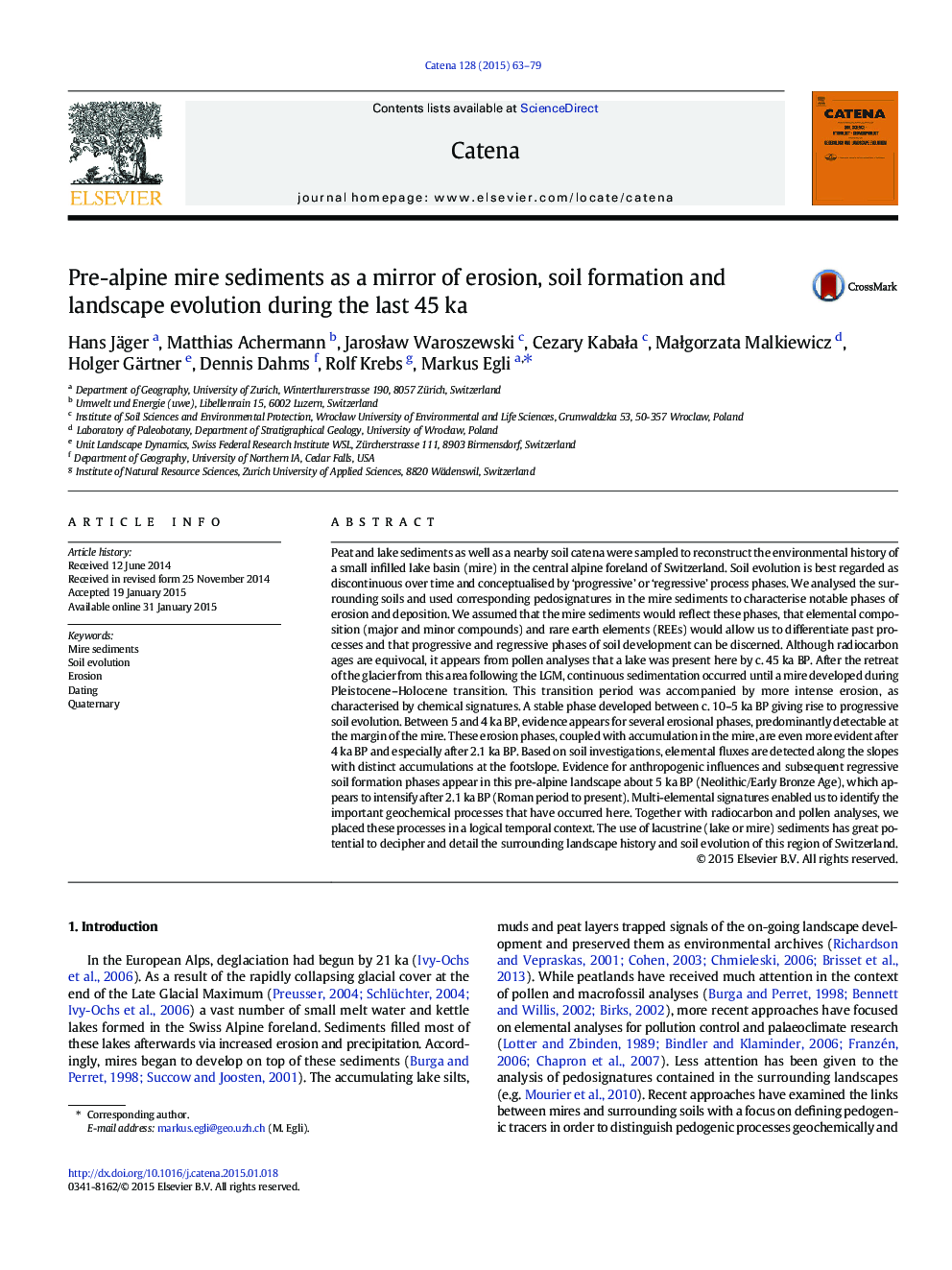| کد مقاله | کد نشریه | سال انتشار | مقاله انگلیسی | نسخه تمام متن |
|---|---|---|---|---|
| 4571179 | 1629224 | 2015 | 17 صفحه PDF | دانلود رایگان |

• Pedosignatures in a pre-Alpine mire helped to reconstruct landscape evolution.
• The surrounding soils showed strong lateral chemical fluxes due to slope processes.
• Progressive and regressive soil formation periods could be detected for the last 45 ka.
• Increased erosion occurred at the Pleistocene–Holocene transition.
• The impact of human activities has started about 5 ky ago.
Peat and lake sediments as well as a nearby soil catena were sampled to reconstruct the environmental history of a small infilled lake basin (mire) in the central alpine foreland of Switzerland. Soil evolution is best regarded as discontinuous over time and conceptualised by ‘progressive’ or ‘regressive’ process phases. We analysed the surrounding soils and used corresponding pedosignatures in the mire sediments to characterise notable phases of erosion and deposition. We assumed that the mire sediments would reflect these phases, that elemental composition (major and minor compounds) and rare earth elements (REEs) would allow us to differentiate past processes and that progressive and regressive phases of soil development can be discerned. Although radiocarbon ages are equivocal, it appears from pollen analyses that a lake was present here by c. 45 ka BP. After the retreat of the glacier from this area following the LGM, continuous sedimentation occurred until a mire developed during Pleistocene–Holocene transition. This transition period was accompanied by more intense erosion, as characterised by chemical signatures. A stable phase developed between c. 10–5 ka BP giving rise to progressive soil evolution. Between 5 and 4 ka BP, evidence appears for several erosional phases, predominantly detectable at the margin of the mire. These erosion phases, coupled with accumulation in the mire, are even more evident after 4 ka BP and especially after 2.1 ka BP. Based on soil investigations, elemental fluxes are detected along the slopes with distinct accumulations at the footslope. Evidence for anthropogenic influences and subsequent regressive soil formation phases appear in this pre-alpine landscape about 5 ka BP (Neolithic/Early Bronze Age), which appears to intensify after 2.1 ka BP (Roman period to present). Multi-elemental signatures enabled us to identify the important geochemical processes that have occurred here. Together with radiocarbon and pollen analyses, we placed these processes in a logical temporal context. The use of lacustrine (lake or mire) sediments has great potential to decipher and detail the surrounding landscape history and soil evolution of this region of Switzerland.
Journal: CATENA - Volume 128, May 2015, Pages 63–79